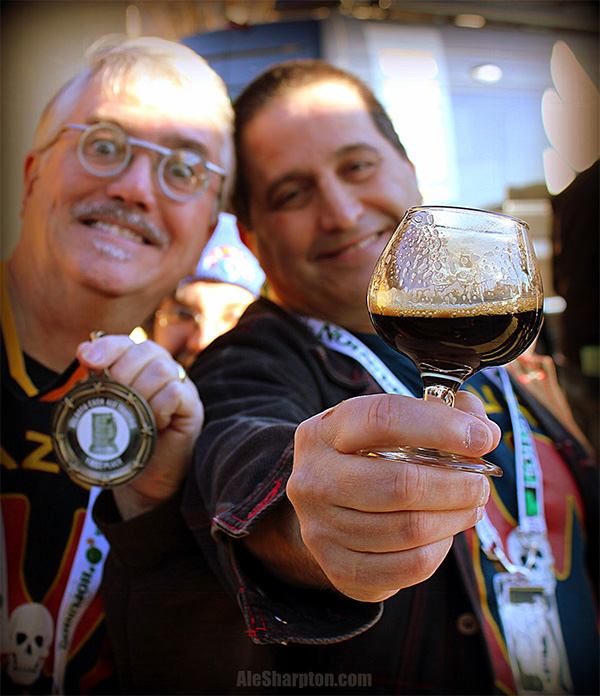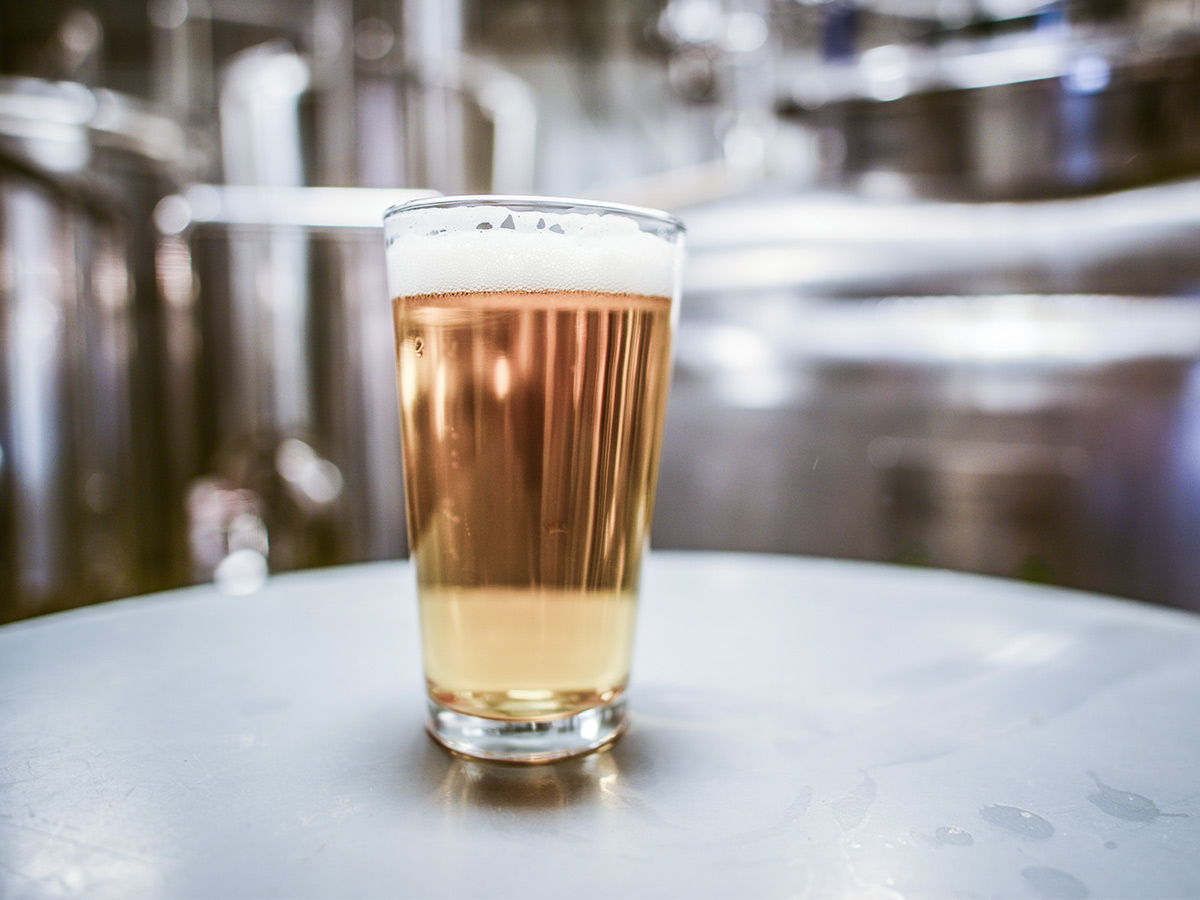Many brewery owners see their job as a vocation. They’ll tell you there’s an undeniable reward that comes with their chosen profession. But whether it’s been in the business for decades or it’s still in the planning stages, owning a brewery can be rife with the same complications, wrong turns and sleepless nights endured by other small business owners.
Now that the craft beer market has matured over the last few decades, so have the challenges facing new and old breweries alike. We spoke with two brewery owners — one from the founding generation, and one still in planning — to learn more about the challenges and, ultimately, rewards, facing craft breweries yesterday, today and tomorrow.
(MORE: Questions Brewers Want You to Ask During a Tour)
Going Rogue
Brett Joyce, president of Rogue Ales and SpiritsOpens in new window, finds himself in a unique position. The brewery was founded in 1988 by a group of men tired of the corporate life, including his father, Jack Joyce. Brett was never far from the business, beginning as a keg washer. He eventually became president and that’s where he sits today, at the helm of a 28-year-old brewery that has become the 34th largest in the U.S., according to the Brewers Association’s annual list ranking breweries’ size by production.
It’s an understanding that you have to earn your relevance. In business, no one is going to give you anything.
Brett says today’s biggest challenge facing Rogue and any brewery of what he calls the “founding generation” is relevance, particularly in an increasingly crowded market.
“Anymore, no one cares that you’re 28. What have you done to be relevant lately?” Brett said. “It’s an understanding that you have to earn your relevance. In business, no one is going to give you anything.”
That’s a stark contrast from 1988 when there were only a handful of small and independent breweries in the country. Brett says those first years were spent fighting to get people on board with novel concepts like bold beer flavors, single-serve 22-ounce packaging and a varied portfolio. Of course, making payroll and surviving financially were a real struggle, but, beyond that, those first pioneering craft breweries set out to create an entirely new market, where every problem they encountered along the way was new.
“Back in the early days it was ‘learn as you go,’” Brett said. “After a while, you build institutional knowledge, but at first, you don’t know anything — from how to work with distributors, to working with chain retailers or all the regulations that come with selling your beer.”
Facing Today’s Challenges

We asked Brett what he thought was the biggest opportunity facing the industry today. He says, hands-down, it’s how beer is viewed versus wine. While many restaurants have embraced craft beer with open arms, Brett still sees craft beer being billed as wine’s little brother — not only on the store’s shelf, but on the table as well.
“I am always perplexed and dismayed at how restaurants can have a 20-page wine list and still only have four bottles of beer,” he said.
(DOWNLOAD: Beer & Food Pairing Chart)
When it comes to industry-wide challenges, Brett sees a number of dangerous bottlenecks looming. As the number of breweries in the U.S. surges to historic numbersOpens in new window, he says one challenge is the competition for creative, competent staff.
“When we first started, there were fewer than 100 craft breweries in the country. I don’t know if the talent is growing at the same rate,” he said.
Brett says distribution is another industry-wide problem in an increasingly segmented craft beer market. SKUs, which is “stock keeping units” for short, are the way individual products are differentiated within a store. For example, if a brewery brews an IPA and a brown ale, those are two separate SKUs in that brand. While the number of small and independent breweries keeps climbing, and the number of SKUs those breweries make continue to rise, breweries are met with a decreasing number of distributors to sell those products.
According to the National Beer Wholesalers Association, a vertical trade organization for beer distributorships, the number of traditional beer distributors has fallen from 4,595 in 1980 to around 3,000 in 2015. In 1996, the typical distributor delivered 190 unique SKUsOpens in new window. In 2015, the average was 981 SKUs.
As distributor numbers drop, and larger distributorships, who are tied to massive contracts with multi-national beer companies like SABMiller and Anheuser-Busch/In Bev, gobble up smaller regional distributorships, the concern is craft breweries will be pitted against each other. If one distributorship now sells the amount of beer that it used to take multiple companies to sell, the concern is that individual craft beers will be lost in a swirling mass of SKUs. Some larger distributors may suffer from a sort of SKU-overload, where there are simply so many under one distribution umbrella, that craft brewers’ beers fall out of sight and out of mind.
With increasing products, paradoxically, may come fewer options for beer drinkers.
The Mystery of MAZURT

Dan Rosen and Hamp Covington are the two men behind what may be the most mysterious brewery-in-planning in Georgia: MAZURT BrewingOpens in new window out of Atlanta. Even though they don’t have a taproom, their high-gravity beers, including barrel aged stouts and what they lovingly refer to as “big-ass English and American barleywines,” have garnered them a cult festival following, as well as a growing list of accolades. Their lack of brick-and-mortar brewery and much-buzzed-about funky coconut-aged beers have also contributed to the anticipatory buzz surrounding the project.
Standing in MAZURT’s way in the Peach State are some of the most restrictive direct-sale alcohol laws in the country.
“The beer laws in Georgia are among the worst in the nation,” Rosen said. “We initially wanted to gypsy brew for another couple of years and continue to build the MAZURT brand, but with the problems Georgia’s laws present, along with how quickly we established a brand known for quality and creativity, it makes sense for us to now focus on building our own state-of-the-art brewery.”
In these early days of MAZURT, Dan feels the same sort of decision-making pinch that Brett remembers from Rogue’s first years; making a call when the best choice isn’t clear is one of the hardest parts of starting a brewery.
(MORE: Southern Beer Laws Have a Long Way to Go)
When it comes to questions of the crowded craft beer market, Rosen is optimistic. Whether or not there is a craft beer bubble doesn’t concern him. “We believe there will always be a demand for high-end beer,” he said, even seeing a rosy future for his home state’s view on alcohol. “As for Georgia’s beer laws, they will change for the better.”
Back at Rogue, Brett shares a similar optimism for new breweries. When asked if he would rather start a brewery in 1988 or now, Brett thought for a minute.
“I’d have to say now, because craft beer is a real thing. It’s now an industry,” he said. “I’m always amazed at the courage it takes for an entrepreneur to start something when there isn’t a market.”
He said the craft beer industry is a little like baseball.
“When we started it was the top of the first inning, now I would say the market is in the top of the sixth, but at least you know there’s a game to play.”
And that game is still rewarding, Brett and Dan would agree, even despite some sleepless nights.
“That moment when you see somebody buying, drinking or enjoying your product and knowing you created it,” Brett says with a smile, “That’s what it’s all about.”


Share Post